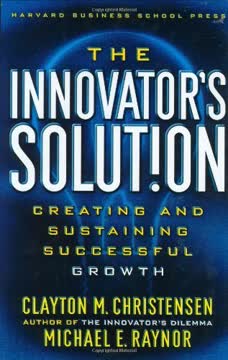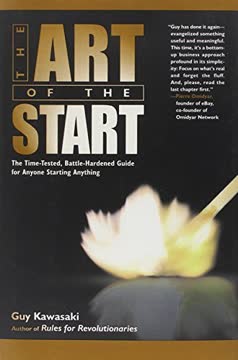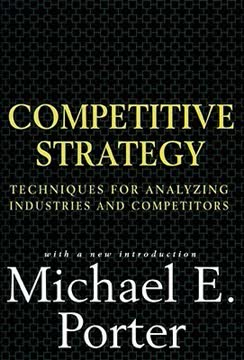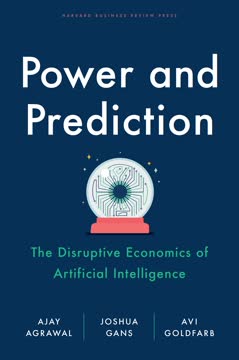मुख्य निष्कर्ष
1. मुफ्त की अर्थव्यवस्था: जब सीमांत लागत लगभग शून्य हो जाती है
परिणामस्वरूप, ऑनलाइन दुनिया में वार्षिक शुद्ध मुद्रास्फीति दर लगभग 50 प्रतिशत है, यानी आज YouTube पर वीडियो स्ट्रीम करने की लागत एक साल में आधी हो जाएगी।
डिजिटल क्रांति ने सूचना उत्पादों के उत्पादन और वितरण की सीमांत लागत को नाटकीय रूप से कम कर दिया है। यह परिवर्तन तीन प्रमुख तकनीकी प्रवृत्तियों से प्रेरित है:
- मूर का नियम: हर 18 महीने में प्रोसेसिंग पावर दोगुनी हो जाती है
- तेजी से घटती भंडारण लागत: हर साल क्षमता दोगुनी होती है
- बढ़ती बैंडविड्थ: हर 9 महीने में गति दोगुनी हो जाती है
ये प्रवृत्तियाँ मिलकर तकनीकी उन्नति का "त्रिगुण खेल" बनाती हैं, जिससे डिजिटल उत्पादों का उत्पादन और वितरण सस्ता होता जा रहा है। नतीजतन, कई डिजिटल उत्पाद और सेवाएँ मुफ्त में उपलब्ध कराई जा सकती हैं, जबकि कंपनियाँ अपनी पेशकशों से आय अर्जित करने के वैकल्पिक तरीके खोजती हैं।
मुफ्त डिजिटल उत्पादों के उदाहरण:
- ईमेल सेवाएँ (Gmail, Outlook)
- सोशल मीडिया प्लेटफॉर्म (Facebook, Twitter)
- वीडियो स्ट्रीमिंग (YouTube)
- ऑनलाइन विश्वकोश (Wikipedia)
2. मुफ्त: एक शक्तिशाली विपणन उपकरण और व्यावसायिक मॉडल
याद रखें, स्टीव जॉब्स का कथन कि यदि आप फाइल ट्रेडिंग के साथ आने वाले जटिल मेटाडेटा को समझने में समय लगाते हैं, तो आप अपने लिए न्यूनतम वेतन भी नहीं कमा रहे हैं?
फ्रीमियम मॉडल डिजिटल अर्थव्यवस्था में एक प्रमुख रणनीति के रूप में उभरा है। इस मॉडल में किसी उत्पाद या सेवा का मूल संस्करण मुफ्त में दिया जाता है, जबकि प्रीमियम सुविधाओं या उन्नत कार्यक्षमता के लिए शुल्क लिया जाता है।
फ्रीमियम मॉडल के मुख्य पहलू:
- मुफ्त पेशकशों के साथ बड़ी उपयोगकर्ता संख्या आकर्षित करना
- उपयोगकर्ताओं के एक छोटे प्रतिशत को भुगतान करने वाले ग्राहक में परिवर्तित करना
- मुफ्त उपयोगकर्ताओं का समर्थन करने के लिए कम सीमांत लागत पर निर्भर रहना
सफल फ्रीमियम व्यवसायों के उदाहरण:
- Spotify (संगीत स्ट्रीमिंग)
- Dropbox (क्लाउड स्टोरेज)
- LinkedIn (पेशेवर नेटवर्किंग)
फ्रीमियम मॉडल कंपनियों को विशाल दर्शक तक पहुँचने और ब्रांड जागरूकता बनाने की अनुमति देता है, जबकि प्रीमियम सुविधाओं में अतिरिक्त मूल्य खोजने वाले उपयोगकर्ताओं से राजस्व भी उत्पन्न करता है।
3. मुफ्त की मनोविज्ञान: क्यों यह उपभोक्ताओं के लिए अटूट आकर्षण है
"शून्य केवल एक और कीमत नहीं है," वे लिखते हैं। "शून्य एक भावनात्मक हॉट बटन है—अतार्किक उत्साह का स्रोत।"
मुफ्त की ताकत इसकी क्षमता में निहित है कि यह उपभोक्ताओं में शक्तिशाली भावनात्मक और मनोवैज्ञानिक प्रतिक्रियाएँ उत्पन्न करता है। व्यवहारिक अर्थशास्त्रियों जैसे डैन एरिएली के शोध से पता चला है कि लोग मुफ्त ऑफ़र के सामने तर्कहीन व्यवहार करते हैं।
मुफ्त के मुख्य मनोवैज्ञानिक प्रभाव:
- लागत-लाभ विश्लेषण की आवश्यकता समाप्त कर देता है
- हानि या पछतावे का डर कम करता है
- प्रचुरता और उदारता की भावना पैदा करता है
ये मनोवैज्ञानिक कारक अक्सर उपभोक्ताओं को मुफ्त विकल्प चुनने के लिए प्रेरित करते हैं, भले ही भुगतान विकल्प बेहतर मूल्य प्रदान करते हों। व्यवसाय इस घटना का लाभ उठाकर मुफ्त पेशकशों के माध्यम से ग्राहकों को आकर्षित कर सकते हैं और संबंधित उत्पादों या सेवाओं की बिक्री बढ़ा सकते हैं।
4. डिजिटल प्रचुरता और इससे उत्पन्न नई कमी
"सूचना-समृद्ध दुनिया में, सूचना की संपदा का मतलब कुछ और की कमी है: वह कमी जो सूचना उपभोग करती है। सूचना जो उपभोग करती है वह स्पष्ट है: यह अपने प्राप्तकर्ताओं का ध्यान उपभोग करती है।"
प्रचुरता का विरोधाभास यह है कि यह नई प्रकार की कमी पैदा करता है। डिजिटल युग में, सूचना और कई डिजिटल वस्तुएं प्रचुर मात्रा में उपलब्ध हैं, लेकिन इससे अन्य क्षेत्रों में कमी उत्पन्न हुई है:
डिजिटल युग में नई कमी:
- ध्यान: सूचना के अधिभार के कारण उपयोगकर्ता का ध्यान आकर्षित करना और बनाए रखना मूल्यवान हो गया है
- विश्वास: सूचना की प्रचुरता के बीच विश्वसनीय स्रोत और क्यूरेटर महत्वपूर्ण हो गए हैं
- समय: विकल्पों और सूचनाओं की प्रचुरता ने समय को एक कीमती संसाधन बना दिया है
- अर्थ: विशाल डेटा से अंतर्दृष्टि निकालने की क्षमता आवश्यक हो गई है
व्यवसाय इन नई कमियों को पूरा करके मूल्य बना सकते हैं, जैसे:
- सूचना को छाँटने और क्यूरेट करने के उपकरण विकसित करना
- विश्वसनीय ब्रांड और समुदाय बनाना
- समय बचाने वाली सेवाएँ और उत्पाद प्रदान करना
- कच्चे डेटा से विश्लेषण और अर्थ निकालना
5. मुफ्त से प्रतिस्पर्धा: व्यवसायों के लिए रणनीतियाँ
मुफ्त से प्रतिस्पर्धा करने का तरीका है प्रचुरता के पार जाकर आसन्न कमी को खोज निकालना।
भेदभाव और मूल्य-वर्धित सेवाएँ मुफ्त विकल्पों की उपलब्धता वाली दुनिया में प्रतिस्पर्धा के लिए मुख्य रणनीतियाँ हैं। व्यवसायों को मुफ्त विकल्पों से अलग या बेहतर कुछ पेश करने पर ध्यान केंद्रित करना होगा।
मुफ्त से प्रतिस्पर्धा के लिए रणनीतियाँ:
- श्रेष्ठ गुणवत्ता या उपयोगकर्ता अनुभव
- व्यक्तिगतकरण और अनुकूलन
- पूरक उत्पाद या सेवाएँ
- मजबूत ब्रांड निष्ठा बनाना
- सुविधा या समय बचाने वाली विशेषताएँ प्रदान करना
मुफ्त से सफल प्रतिस्पर्धा के उदाहरण:
- नल के पानी के मुकाबले बोतलबंद पानी
- मुफ्त वेबमेल के मुकाबले प्रीमियम ईमेल सेवाएँ
- मुफ्त वीडियो प्लेटफॉर्म के मुकाबले भुगतान वाली स्ट्रीमिंग सेवाएँ (Netflix, HBO)
मुफ्त विकल्पों से परे अतिरिक्त मूल्य बनाकर, व्यवसाय अपने उत्पादों और सेवाओं के लिए शुल्क लेना उचित ठहरा सकते हैं।
6. उपहार अर्थव्यवस्था और गैर-मौद्रिक बाजार
प्रकृति बेहतर जीवन की खोज में जीवन को व्यर्थ करती है।
डिजिटल उपहार अर्थव्यवस्था पारंपरिक बाजारों के साथ फल-फूल रही है, जो मूल्य विनिमय के नए रूप पैदा कर रही है। यह अर्थव्यवस्था गैर-मौद्रिक प्रेरणाओं जैसे प्रतिष्ठा, ध्यान, और समुदाय में योगदान की इच्छा से संचालित होती है।
डिजिटल उपहार अर्थव्यवस्था के मुख्य पहलू:
- ओपन-सोर्स सॉफ्टवेयर विकास
- उपयोगकर्ता-जनित सामग्री (विकि, फोरम, समीक्षाएँ)
- क्रिएटिव कॉमन्स लाइसेंसिंग
ये गैर-मौद्रिक बाजार पारंपरिक आर्थिक गतिविधियों को पूरक और सशक्त बनाते हैं:
- नवाचार और सहयोग को बढ़ावा देना
- समुदाय और नेटवर्क बनाना
- मूल्यवान संसाधन और ज्ञान आधार तैयार करना
व्यवसाय उपहार अर्थव्यवस्था का लाभ उठा सकते हैं:
- ओपन-सोर्स परियोजनाओं का समर्थन करके
- उपयोगकर्ता-जनित सामग्री को प्रोत्साहित करके
- ज्ञान साझा करने और सहयोग के लिए प्लेटफॉर्म बनाकर
7. मुफ्त का नवाचार और बौद्धिक संपदा पर प्रभाव
पेटेंट में मुफ्त के लिए पहले से ही जगह है—यह सत्रह वर्षों के बाद लागू होता है।
मुफ्त और बौद्धिक संपदा के बीच तनाव नवाचार और बौद्धिक संपदा अधिकारों को पुनः आकार दे रहा है। कुछ लोग मानते हैं कि मुफ्त नवाचार को कमजोर करता है क्योंकि यह प्रोत्साहन कम करता है, जबकि अन्य का तर्क है कि यह रचनात्मकता और प्रगति को बढ़ावा दे सकता है।
मुफ्त नवाचार को बढ़ावा देने के तर्क:
- तेजी से पुनरावृत्ति और सुधार को प्रोत्साहित करता है
- नवाचार में व्यापक भागीदारी सक्षम बनाता है
- ज्ञान और विचारों के प्रसार को सुविधाजनक बनाता है
मुफ्त के खिलाफ तर्क:
- रचनाकारों के लिए वित्तीय प्रोत्साहन कम करता है
- अनुसंधान एवं विकास में कम निवेश हो सकता है
- पारंपरिक व्यावसायिक मॉडल को खतरा पहुंचा सकता है
चुनौती यह है कि एक ऐसा संतुलन खोजा जाए जो रचनाकारों के अधिकारों की रक्षा करे और नवाचार तथा प्रगति के लिए अनुकूल वातावरण बनाए।
8. मुफ्त के पर्यावरणीय और सामाजिक लागत
हमारे पृष्ठ न केवल महंगे हैं, वे अपरिवर्तनीय भी हैं। एक बार प्रेस चलने के बाद, हमारी गलतियाँ और निर्णय की त्रुटियाँ अनंत काल तक संरक्षित रहती हैं (या कम से कम जब तक वे पुनर्चक्रित नहीं हो जाते)।
मुफ्त की छिपी हुई लागतें पर्यावरणीय और सामाजिक प्रभाव डाल सकती हैं। जबकि डिजिटल मुफ्त अक्सर भौतिक उत्पादन की कमी के कारण पर्यावरण के अनुकूल लगता है, इसके नकारात्मक बाहरी प्रभाव हो सकते हैं।
मुफ्त के संभावित नकारात्मक प्रभाव:
- डेटा केंद्रों और उपकरण उत्पादन की पर्यावरणीय लागत
- ध्यान अर्थव्यवस्था की सामाजिक लागत (जैसे मुफ्त सोशल मीडिया की लत)
- पारंपरिक उद्योगों में आर्थिक व्यवधान
इन चुनौतियों का समाधान करने के लिए आवश्यक है:
- मूल्य निर्धारण मॉडल में वास्तविक लागतों को शामिल करना
- अधिक टिकाऊ तकनीकों का विकास
- मुफ्त के लाभों और संभावित नुकसानों के बीच संतुलन बनाना
9. डिजिटल अर्थव्यवस्था की दुनिया में मुफ्त का भविष्य
अचानक एक सैद्धांतिक आर्थिक मॉडल, जिसे एक शताब्दी पहले एक मजाक के रूप में बनाया गया था, ऑनलाइन मूल्य निर्धारण का नियम बन गया।
मुफ्त का विकास डिजिटल अर्थव्यवस्था को आकार देना जारी रखेगा। जैसे-जैसे तकनीक उन्नत होती है और नए व्यावसायिक मॉडल उभरते हैं, मुफ्त की अवधारणा और भी व्यापक और जटिल होती जाएगी।
मुफ्त के संभावित भविष्य के विकास:
- डेटा का मुद्रा के रूप में बढ़ता उपयोग
- फ्रीमियम मॉडलों का विकास
- मुफ्त पेशकशों में ब्लॉकचेन और क्रिप्टोकरेंसी का समावेश
- वर्चुअल और ऑगमेंटेड रियलिटी में नए मूल्य विनिमय के रूप
व्यवसायों और उपभोक्ताओं दोनों को इन परिवर्तनों के अनुकूल होना होगा, और एक ऐसे डिजिटल परिदृश्य में मूल्य सृजन और प्राप्ति के नए तरीके खोजने होंगे जहाँ मुफ्त की भूमिका बढ़ती जा रही है।
अंतिम अपडेट:
FAQ
What's Free: The Future of a Radical Price by Chris Anderson about?
- Exploration of "Free" Concept: The book examines how the concept of "free" has evolved from a marketing tactic to a core economic model in the digital age.
- Impact on Business Models: It discusses how technological advancements have enabled businesses to offer products and services at little to no cost.
- Cultural and Economic Implications: Anderson explores the societal and psychological effects of free, reshaping consumer behavior and business strategies.
Why should I read Free: The Future of a Radical Price by Chris Anderson?
- Understanding Modern Economics: The book provides insights into new economic models emerging in the digital landscape, crucial for business and technology enthusiasts.
- Real-World Examples: Anderson uses case studies like Google and Craigslist to show how companies leverage free to disrupt traditional markets.
- Future-Proofing Knowledge: Understanding the principles in the book helps readers navigate the rapidly changing economic environment influenced by digital technologies.
What are the key takeaways of Free: The Future of a Radical Price by Chris Anderson?
- Free as a Business Model: "Free" is not just a marketing strategy but a viable business model that can lead to significant market share and customer loyalty.
- Psychology of Free: Consumers perceive free products differently, often associating them with lower quality unless they have always been free.
- Cross-Subsidization: The book explains models where one product is free to drive sales of another, highlighting the importance of understanding these dynamics.
What are the best quotes from Free: The Future of a Radical Price by Chris Anderson and what do they mean?
- "There’s no such thing as a free lunch.": While something may be offered for free, there are often hidden costs or trade-offs involved.
- "Information wants to be free.": Reflects the dual nature of information in the digital age, being abundant and easily shared yet valuable.
- "You can make money giving things away.": Highlights the paradox where businesses thrive by offering free products, relying on alternative revenue streams.
How does Chris Anderson define "free" in Free: The Future of a Radical Price?
- Two Meanings of Free: Anderson distinguishes between "free as in freedom" and "free as in zero cost," emphasizing the latter in digital economics.
- Cultural Context: The perception of free has evolved, with consumers often expecting digital products to be free.
- Psychological Implications: Free affects consumer behavior, leading to increased usage and engagement when products are offered at no cost.
What is "freeconomics" as discussed in Free: The Future of a Radical Price by Chris Anderson?
- Definition of Freeconomics: Refers to economic principles and business models arising from free products and services, especially in the digital realm.
- Market Dynamics: Disrupts traditional pricing models, leading to new revenue generation methods like advertising and premium services.
- Examples of Freeconomics: Companies like Google and Facebook offer free services while monetizing through advertising.
How does Free: The Future of a Radical Price by Chris Anderson illustrate the impact of free on traditional industries?
- Case Studies: Uses examples like the decline of print newspapers due to free online content to show disruption of traditional models.
- Market Redistribution: Free can redistribute wealth within industries, benefiting consumers while challenging established companies.
- Long-Term Effects: While initially harmful to existing businesses, free can create new opportunities and markets benefiting society.
What are the psychological effects of free on consumers according to Free: The Future of a Radical Price by Chris Anderson?
- Perception of Value: Consumers often perceive free products as lower quality, especially if they were previously paid products.
- Increased Engagement: Free offerings lead to higher engagement and usage rates, removing barriers to entry.
- Mental Transaction Costs: Free eliminates cognitive effort required for purchasing decisions, encouraging participation.
How does Chris Anderson explain the concept of cross-subsidization in Free: The Future of a Radical Price?
- Definition of Cross-Subsidization: Occurs when one product is free or low-cost to drive sales of another profitable product.
- Examples in Business: Includes models like the razor-and-blades, where the razor is cheap to encourage blade purchases.
- Strategic Importance: Understanding cross-subsidization is crucial for developing effective business models in the age of free.
What role does technology play in the concept of free according to Free: The Future of a Radical Price by Chris Anderson?
- Driving Down Costs: Advancements in technology have made it possible to offer products and services for free.
- Creating New Markets: Technology enables new markets and business models leveraging free, transforming industries.
- Future Implications: As technology evolves, free will become more integral to business strategies and consumer behavior.
How does Free: The Future of a Radical Price by Chris Anderson address the future of free in the economy?
- Ongoing Evolution: Free will continue to evolve, influencing business operations and consumer interactions.
- Potential Challenges: Risks include monopolies forming around free services, limiting competition and innovation.
- Opportunities for Growth: Embracing free principles can lead to new opportunities for growth and innovation in the economy.
How does Free: The Future of a Radical Price by Chris Anderson address the issue of piracy?
- Piracy as Marketing: Suggests piracy can increase visibility and audience reach for creators.
- Changing Attitudes: Attitudes toward piracy are evolving, especially among younger generations.
- Long-Term Strategies: Creators should leverage free distribution benefits while finding monetization methods.
समीक्षाएं
फ्री: द फ्यूचर ऑफ़ अ रैडिकल प्राइस डिजिटल युग में "मुफ्त" की अवधारणा को गहराई से समझने का प्रयास करता है, जिसमें बिना किसी कीमत के उत्पाद या सेवाएं प्रदान करने वाले विभिन्न व्यावसायिक मॉडल और रणनीतियों पर चर्चा की गई है। कुछ पाठकों ने इस पुस्तक को सूचनाप्रद और विचारोत्तेजक पाया, जबकि कुछ ने इसे दोहरावपूर्ण और अत्यधिक आशावादी भी माना। यह पुस्तक मुफ्त ऑफ़रिंग के ऐतिहासिक उदाहरणों और उनके व्यवसायों पर प्रभाव का विश्लेषण करती है, साथ ही उपभोक्ताओं की मुफ्त उत्पादों के प्रति मनोवैज्ञानिक प्रतिक्रियाओं को भी समझाती है। मिश्रित समीक्षाओं के बावजूद, कई पाठकों ने डिजिटल युग में बदलते आर्थिक परिदृश्य पर एंडरसन के विश्लेषण की सराहना की है।
Similar Books















